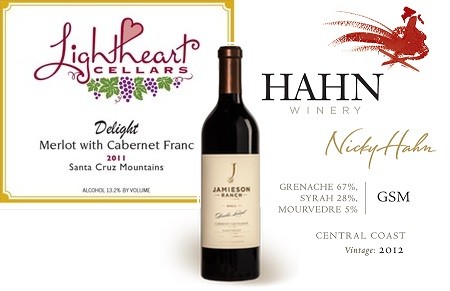The over-used cliché that “you shouldn’t judge a book by its cover” is absolutely something to keep in mind when faced with the task of picking a bottle of wine at the store. It’s hard to escape, though; at least with books, you can open the front cover, flip through, read a couple paragraphs, and decide if it’s to your liking. How do you do that with wine?
It’s unlikely that the store will allow you to just open the bottle and taste it before committing to the sale. So you are faced with the dilemma of whether to go with something that you know is decent and will suit your needs, go off of a salesperson’s recommendation, or select a wine based on the label.
For argument’s sake, let’s assume that you don’t recognize any of the wines on the shelf or that you’re in the mood to try something different, and that you don’t want (or, sadly, can’t find) assistance from a sales clerk. You’re flying blind in the wine aisle!
Don’t panic.
First, focus on what you want; varietal, price range, region. Narrow down your search as much as you can, and then focus on that area of the department. When you’ve done that, you can start to have some fun with selecting the exact bottle you should bring home.
The labels are the best tool you have in a semi-blind selection process; they are, of course, designed to tell you a bit about the wine inside the bottle, as well as the type of experience you should bring the bottle to. So, unlike books, you should absolutely judge a wine by its “cover!”
Is the label brightly colored and full of artistic renderings of farm animals or people playing music? The wine inside is more likely to be full of juicy fruit flavors. The colors used on the label can also give you a hint at the flavors you can detect in the wine. White wines with green-dominated labels will be more likely to exhibit high acidity, an herbaceous quality, and be quite dry and racy. White wines with more yellow and orange tones on the label will tend to exhibit richer tropical and orchard fruit flavors (like banana, golden apple, and peach), and likely have a more creamy mouthfeel.
You can use the same trick with red wines; if a red wine is heavier-bodied with a lot of tannin and black fruit flavors, the colorful labels will have more black, blue, and dark purple tones. A lighter-bodied red will more likely have a pink or magenta label.
It’s much easier to determine the nature of the wine in those brightly-hued bottles than in the more restrained, “traditional” labels. Fun, decorative, and imaginative labels are going to appear on wines that exhibit the same traits. But there are still some giveaways on the labels that aren’t so exhuberant.
Is the label white or cream-colored, sporting a name that begins with “Chateau” or “Domaine,” and featuring a depiction of the winery embossed in gold? You can bet that the wine will be more earth-driven, or “Old-World styled.” If it looks like it’s emulating the classic French and Italian labels, that tells you the winemaker’s approach to the wine inside was probably influenced by French and Italian winemaking traditions, and will therefore be a higher-acid, higher-tannin, higher-earthiness, food-friendly wine.
There are a few other tricks to picking out a bottle that you’ll like when you’re flying blind, but if you can’t glean enough information from the label of a particular bottle to decide whether you should check it out, my advice is simple: Do it! Don’t overthink the purchase. It’s way more fun to find out whether you like the bottle or not by actually *tasting* the wine, after all!

